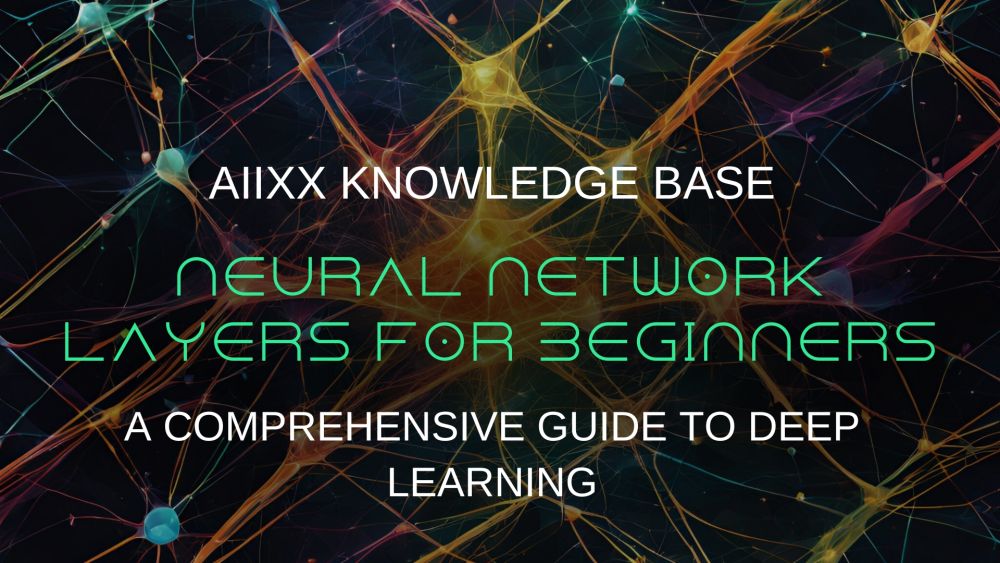Neural Network Layers for Beginners: A Comprehensive Guide to Deep Learning
Ever wondered how computers can learn to recognize cats in photos, understand your voice, or even translate languages? A big part of the magic is something called Neural Networks, and at the heart of these networks are Layers.
Think of a neural network like a sandwich. Just like a sandwich has different layers (bread, fillings, more bread!), a neural network is built with layers that work together to process information. Let's unwrap these layers and see what's inside!
(Interactive Diagram Alert! 🚨 Take a look at the cool diagram. It's a visual guide to the layers we're about to explore!)
Neural Network Layer Architecture
• Fully connected layers: Each node in one layer connects to every node in the next. Analogy: Like a dense network of roads.
• Learnable weights between nodes: Connections have strengths that are adjusted during training. Analogy: Like strengthening neural pathways in your brain as you learn.
• Activation functions at each node: Introduce non-linearity, allowing the network to learn complex patterns. Analogy: Like a light switch that can be dimmed, not just on or off.
Meet the Layers: Your Neural Network Dream Team!
Imagine data flowing through your neural network sandwich. Each layer has a special job to do, transforming the data step by step until we get the final result. Let's meet the three main types of layers in a simple neural network:
1. The Input Layer: "Hello, Data!" 👋
This is where everything begins! The Input Layer is like the front door of your neural network. It's responsible for receiving the raw data that you want to feed into the network.
- What it does: It takes in your initial information. This could be anything:
- For images: Pixel values (the colors of each tiny dot in a picture).
- For text: Words or even individual letters.
- For sounds: Audio wave data.
- For sensors: Readings from temperature sensors, movement sensors, etc.
- Think of it like: Your eyes when you look at a picture.
- In the Diagram: See the Input Layer at the top of the diagram? Each little circle (node) in this layer represents a single piece of input data. Hover over the Input Layer in the diagram to see a tooltip!
2. The Hidden Layer: The Brains of the Operation!
This is where the real magic happens! Hidden Layers are the workhorses of the neural network. They sit between the input and output layers and do the heavy lifting of processing the information.
- What it does: Hidden layers learn to recognize patterns and features in the data by:
- Receiving information: Taking data from the Input Layer (or another Hidden Layer).
- Performing calculations: Doing math with the data using "weights" and "activation functions."
- Passing it on: Sending the processed information to the next layer.
- Why "Hidden"? They are internal layers not directly exposed like the Input and Output Layers.
- More than one? Neural networks can have many hidden layers (deep neural networks) to learn complex patterns.
- Think of it like: Your brain’s visual cortex processing what your eyes see.
- In the Diagram: Spot the Hidden Layer in the middle. Hover over it to learn more!
3. The Output Layer: "Here's the Answer!" 🎉
Finally, we reach the finish line! The Output Layer gives you the final result or prediction from the network.
- What it does: Produces the answer based on all previous processing. Depending on the task:
- Classification: May have multiple nodes (e.g., one for "cat" and one for "dog").
- Regression: Might have a single node outputting a numerical value.
- Translation: Produces translated text.
- Number of Nodes: Varies with the task (e.g., 10 nodes for digit recognition, 1 for binary classification).
- Think of it like: Your brain making a decision after processing information.
- In the Diagram: Look at the Output Layer at the bottom. Hover over it to see its tooltip!
Interactive Neural Network Explorer
Input Layer
The gateway where information enters the network. Like your senses taking in data from the world.
First Hidden Layer
Learns simple patterns, like how a child first recognizes shapes and colors.
Second Hidden Layer
Combines simple patterns into complex ideas, like letters into words.
Output Layer
Makes the final decision, like a teacher grading a test after reviewing all answers.
Understanding Neural Network Architecture
Neural networks consist of layers of interconnected nodes that transform input data. Each connection has a weight that influences how signals pass between nodes.
Forward Propagation
In forward propagation, inputs are passed layer by layer, multiplied by weights, summed, and transformed by an activation function. The output of one layer becomes the input of the next.
Network Training Process
Training adjusts the connection weights to minimize prediction errors. Backpropagation calculates weight updates, and optimizers like SGD or Adam apply these updates, improving accuracy over time.
Key Things to Remember About Layers
- Data Flow: Information always flows forward, from the Input Layer, through the Hidden Layers, to the Output Layer. Like an assembly line!
- Connections: Each node in one layer is usually connected to many nodes in the next (a "fully connected" network), and these connections have learnable weights.
- Learning happens in the connections: The network adjusts connection weights during training to improve predictions.
Test Your Knowledge! 🧠 Quick Quiz Time!
(The interactive quiz is included above in the diagram section!)
You're a Layer Expert Now! 🎉
Congratulations! You've taken your first step into understanding Neural Network Layers. By understanding how they work, you're well on your way to grasping the amazing world of artificial intelligence.





